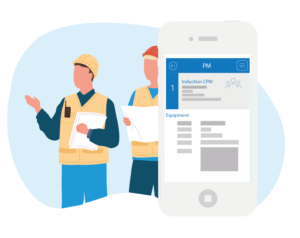What exactly is preventive maintenance?
By definition, Preventive maintenance (PM) is maintenance that is regularly performed on a piece of equipment or an asset to reduce the likelihood of it failing. Preventive maintenance is performed while the equipment is still effective, so that it does not break down unexpectedly. Preventive maintenance is a planned event so that any and all required resources are available.
The maintenance is scheduled based on a time or usage trigger. A typical example of an asset with a time based Preventive maintenance schedule is an air-conditioner which is serviced every year, before summer or a heating system scheduled prior to winter months. A perfect example of an asset with a usage based Preventive maintenance schedule is like a car which might be scheduled for an oil change every 3500 miles.
Assets suitable for Preventive maintenance include those that:
- have a critical operational function
- have failure modes that can be prevented with regular maintenance
- have a likelihood of failure that increases with time or over use
Unsuitable applications for Preventive maintenance include those that:
- have random failures that are unrelated to maintenance (such as circuit boards)
- do not serve a critical function
Advantages of Preventive maintenance: Planning is the biggest advantage of Preventive maintenance over less complex strategies. Unplanned, reactive maintenance has many overhead costs that can be avoided during the planning process. The cost of unplanned maintenance includes the loss of production; increased costs for parts and shipping, as well as time lost responding to emergencies and diagnosing faults while equipment is not working not to mention the costs of downtime of machine and resources. Unplanned maintenance typically costs three to nine times more than planned maintenance. When maintenance is planned, each of these costs will be reduced. Equipment can be shut down to coincide with production downtime. Prior to the shutdown, any required parts, supplies and personnel can be gathered to minimize the time taken for a repair. These measures decrease the total cost of the maintenance. Safety is also enhanced.
Advantages compared with more complex strategies: Preventive maintenance does not require condition-based monitoring. This eliminates the need and cost to conduct and interpret condition monitoring data and act on the results of that interpretation. It also eliminates the need to own and use condition monitoring equipment.
Unlike reactive maintenance, Preventive maintenance requires maintenance planning. With MRI NETfacilities CMMS, the software will schedule in advance the dates to insure coverage. This does require an investment in time and resources that are not required with less complex maintenance strategies but the cost differential of a breakdown is massive.
Affordable Housing Asset Manager Insights: Maximize Portfolio Performance by Supporting Housing Operators
From rising operational costs to increased demand for flexibility and technology, asset managers are navigating unique challenges to support property management teams while ensuring portfolio health and resilience. Recent MRI research delves into the…

